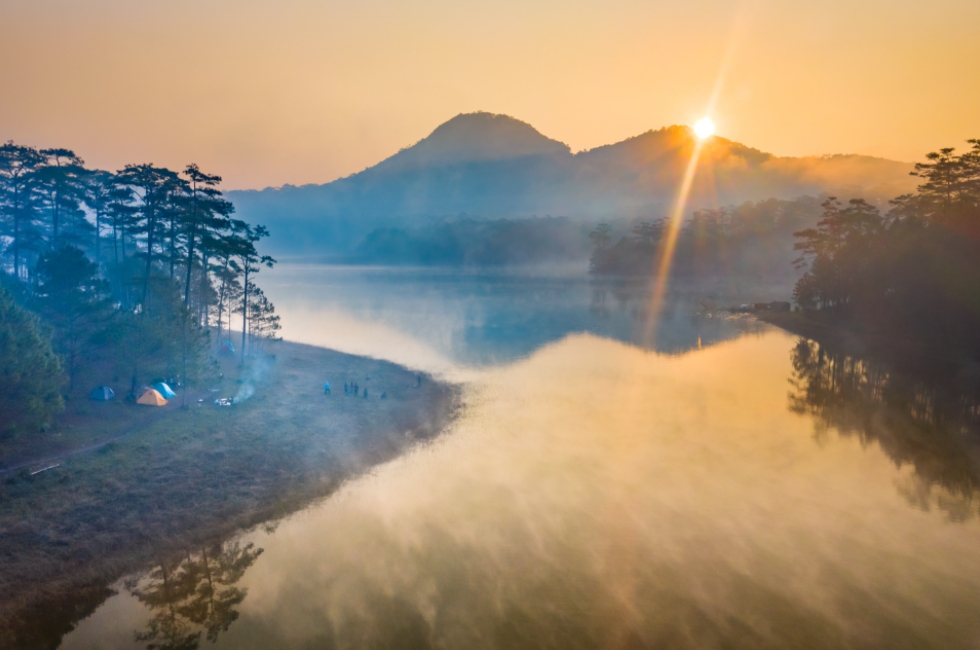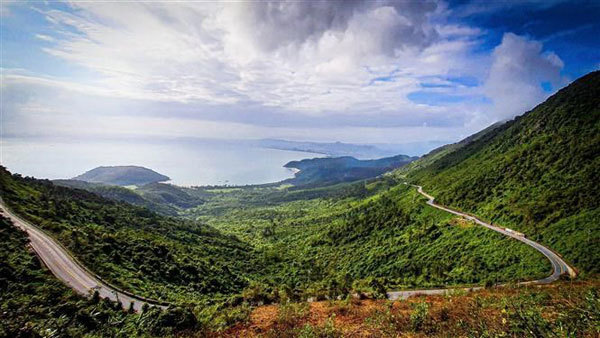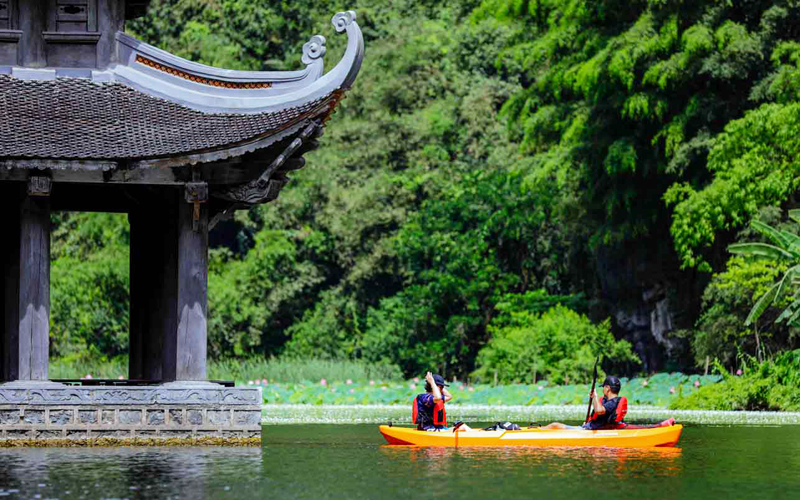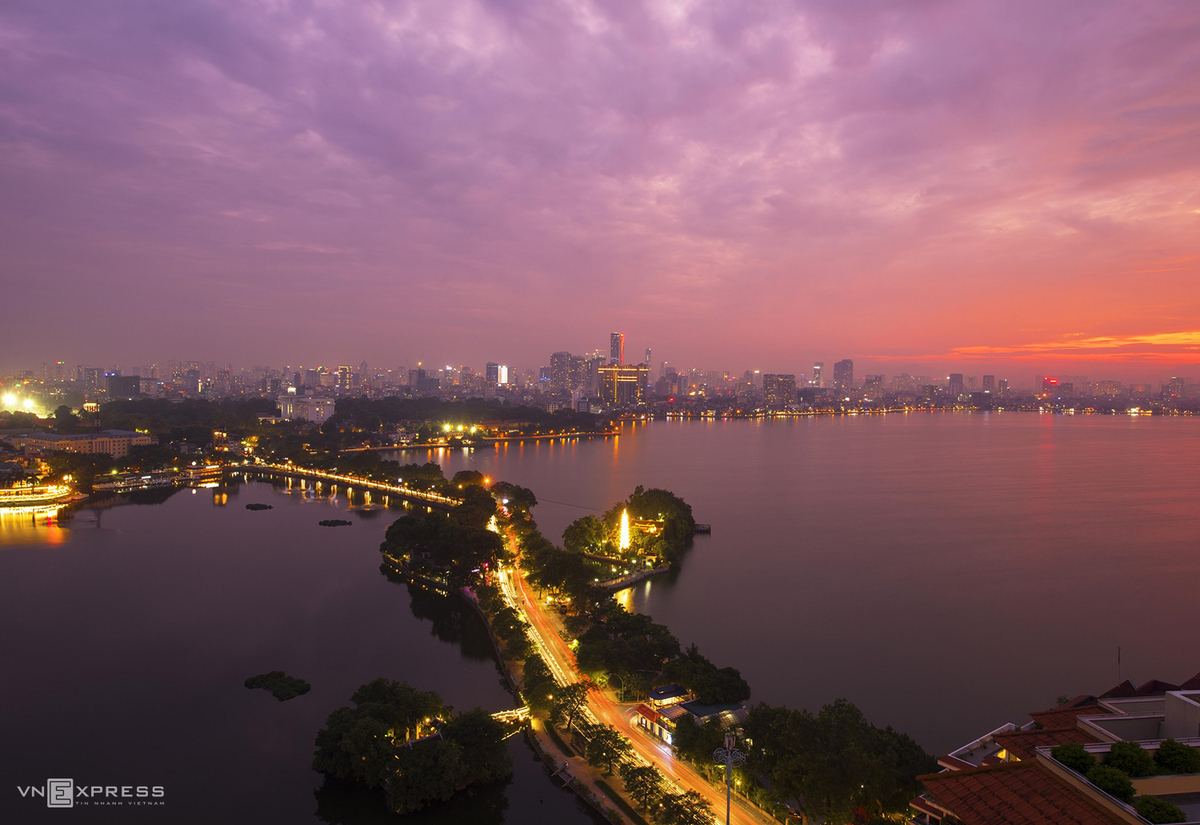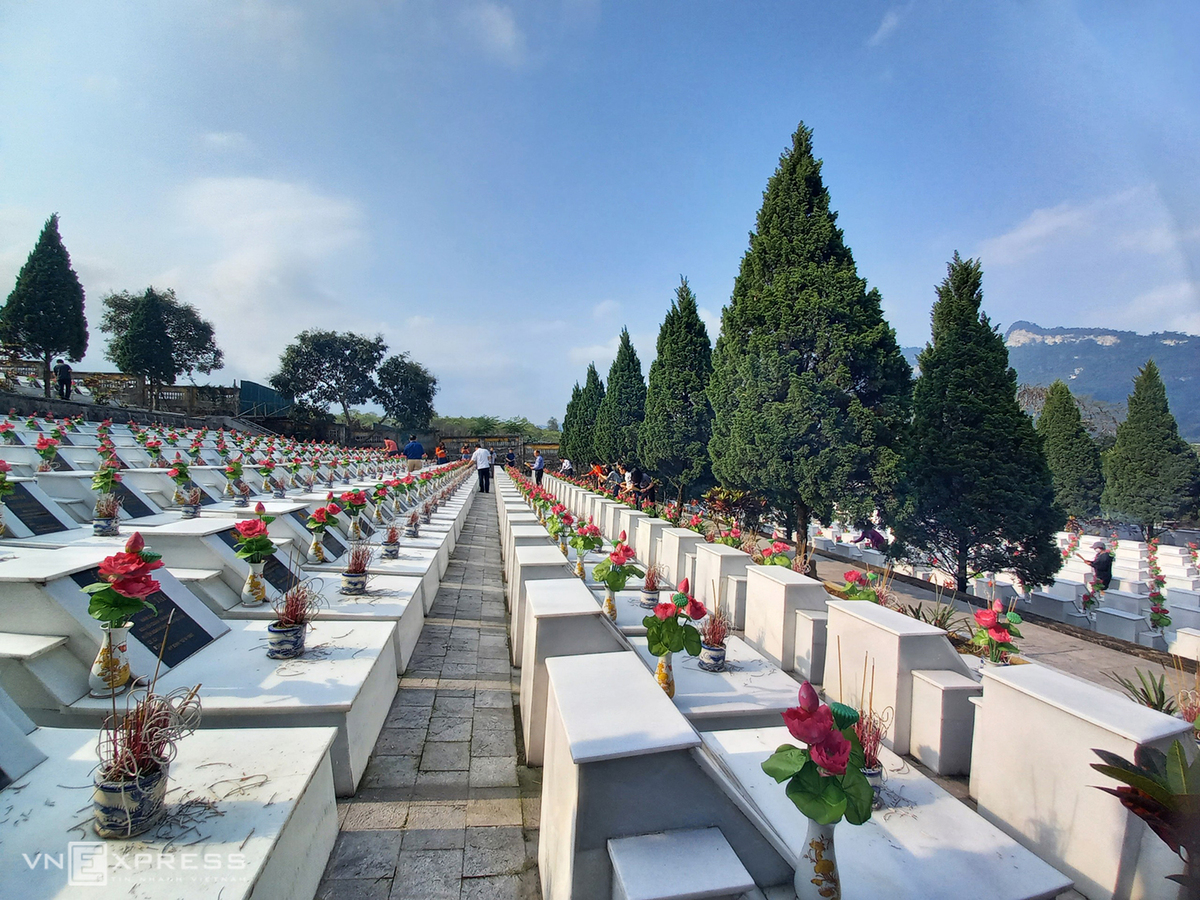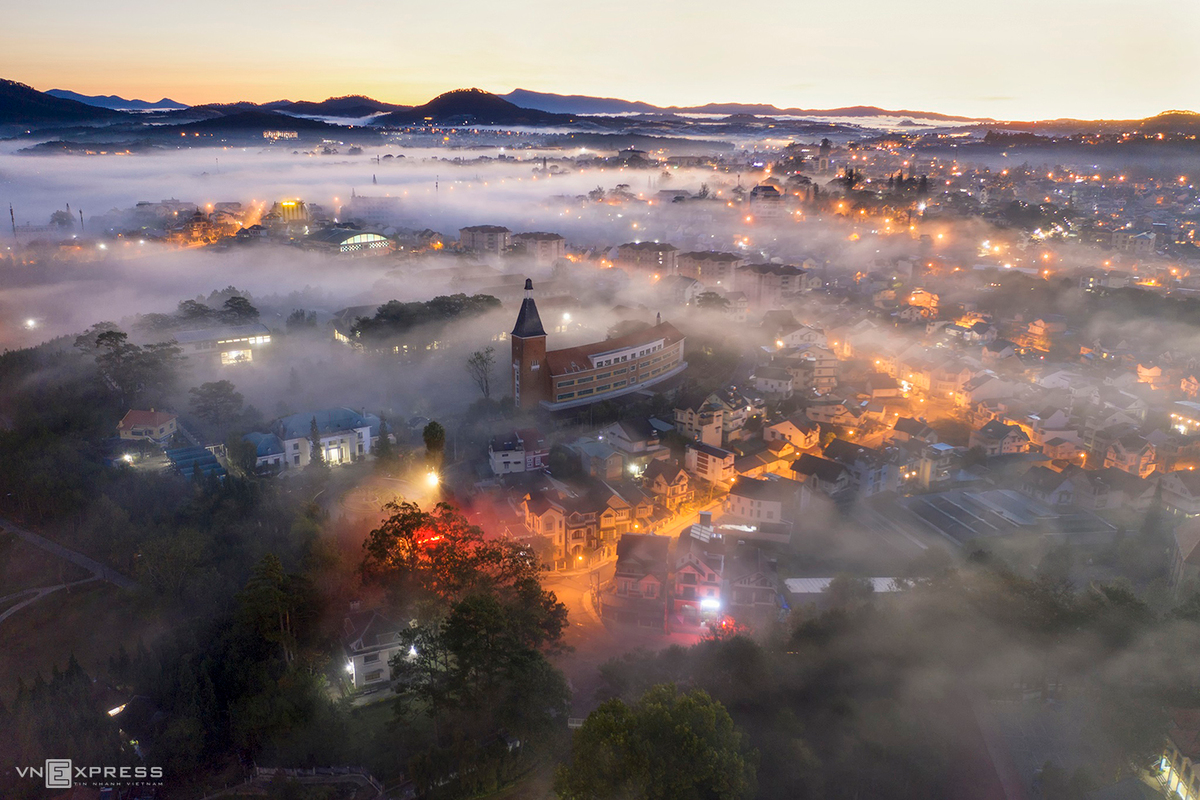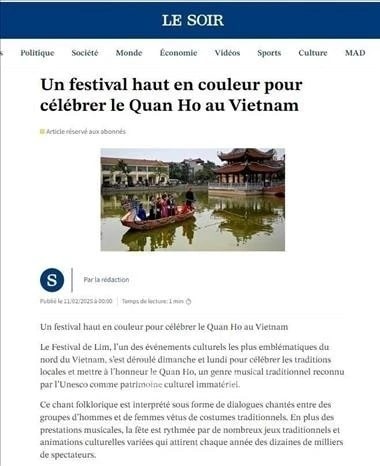The antique beatuty of Hue Citadel
| Stunning landscapes of early mist on Tuyen Lam Lake In Da Lat |
| Hai Van Pass - one of the most scenic hillside roads in Vietnam |
| Kayaking on one of Vietnam's most picturesque landscape river |
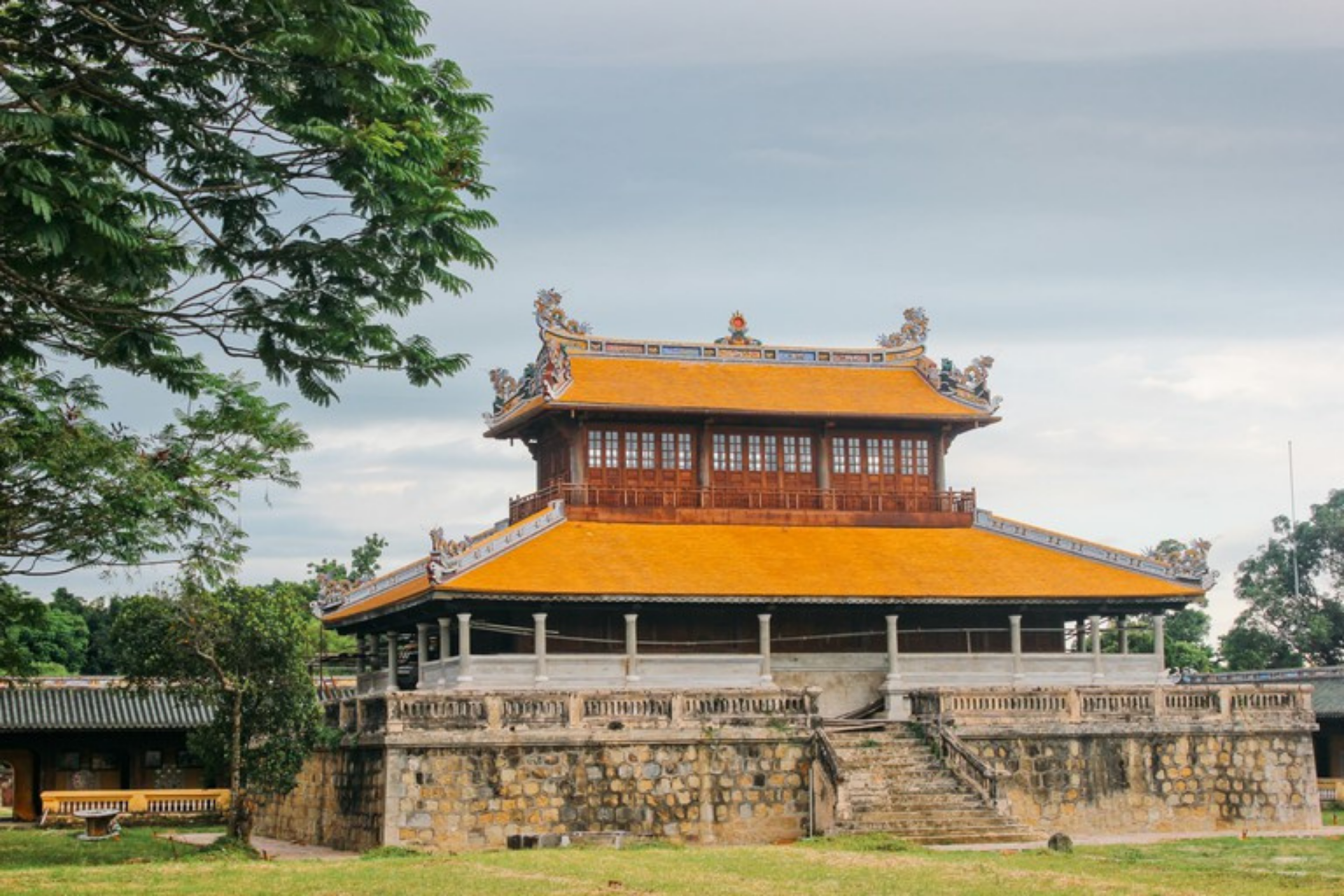 |
| The Purple Forbidden City |
From the time of the Nguyen Lords, Hue has been chosen as the capital of the south: Hue was the capital of the reign of King Quang Trung Nguyen Hue, and again became the official capital of the country when Nguyen Phuc Anh was crowned emperor, starting the Nguyen dynasty which lasted for 143 years. With a rich history associated with nine generations here, is not difficult to understand when Emperor Gia Long chose the land to become the capital for his reign.
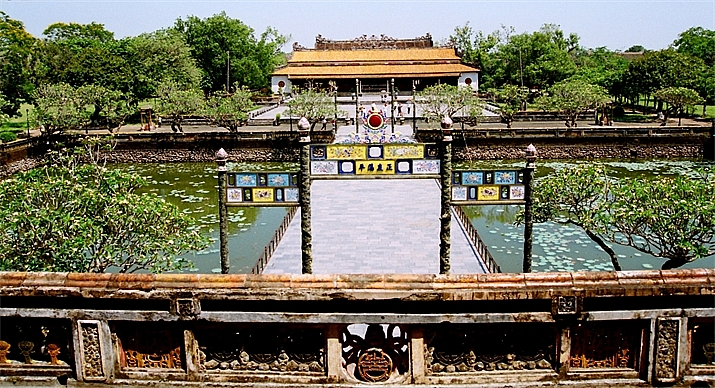 |
| Ngo Mon Gate |
The Complex of Hue Citadel is a UNESCO World Heritage Site, which consists of massive complex featuring hundreds of monuments and ruins from Vietnam War. Entering Hue Citadel, travelers may visit the Forbidden Purple City, the Imperial City, royal tombs, flag tower, pagodas, temples, library and museum, which offer much interesting information and experience, according to Bestpricetravel.
Construction started in 1805, Hue Citadel is planned on the north bank of the Perfume River, turning its face toward the south, with a surface area of 520 hectares, 10 main gates.
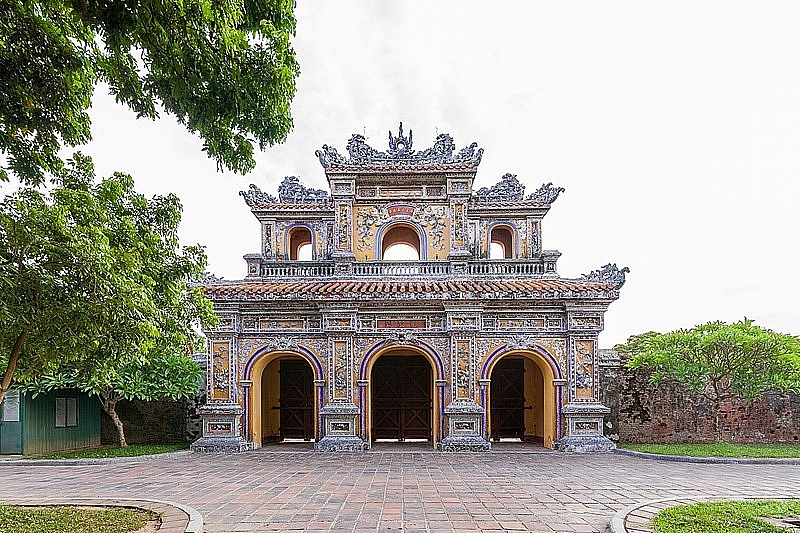 |
| Hien Nhon Gate |
Originally made of earth, until the end of Gia Long reign, it was built from brick. Hue Citadel is a unique combination between the Vietnam’s traditional architectural principles, Eastern philosophy with the five elements of yin and yang from China and characteristics influenced by Western military architecture Vauban style (a French architectin late seventeenth century).
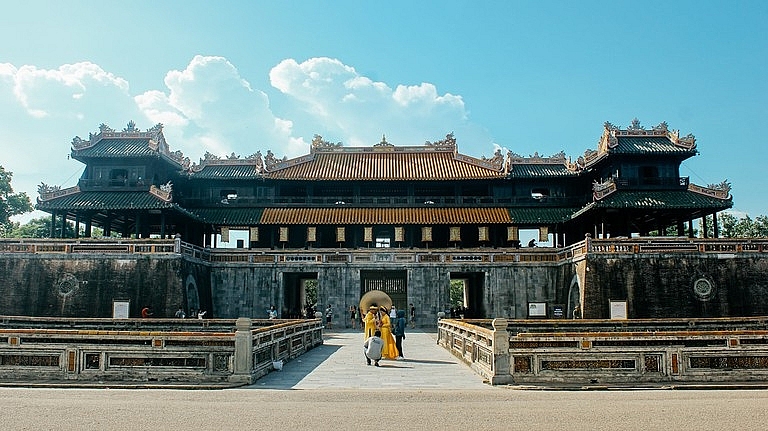 |
| Meridian Gate |
In the history of early modern Vietnam, Hue Citadel is perhaps the construction of most massive scale with tens of thousands of people participated, millions of cubic meters of rock used, with an enormous workload of trenching, filling rivers, migration, graves relocation, molding ... extending from the time of research in 1803 (Gia long's reign) until completion in 1832 (the reign of King Minh Mang), according to VietnamtourismGov.
Unfortunately, the Imperial Citadel today is just a shadow of what it once was. Most temples, pavilions, walls, and gates were severely damaged during wars. Including more than 160 buildings originally, only 20 buildings survived from severe damages under French rule and Vietnam War. Fortunately, in 1993, UNESCO designated the Citadel as one point of the World Heritage List, which enhanced Hue and the Citadel’s position in Vietnam tourism development.
The Kinh Thanh Hue
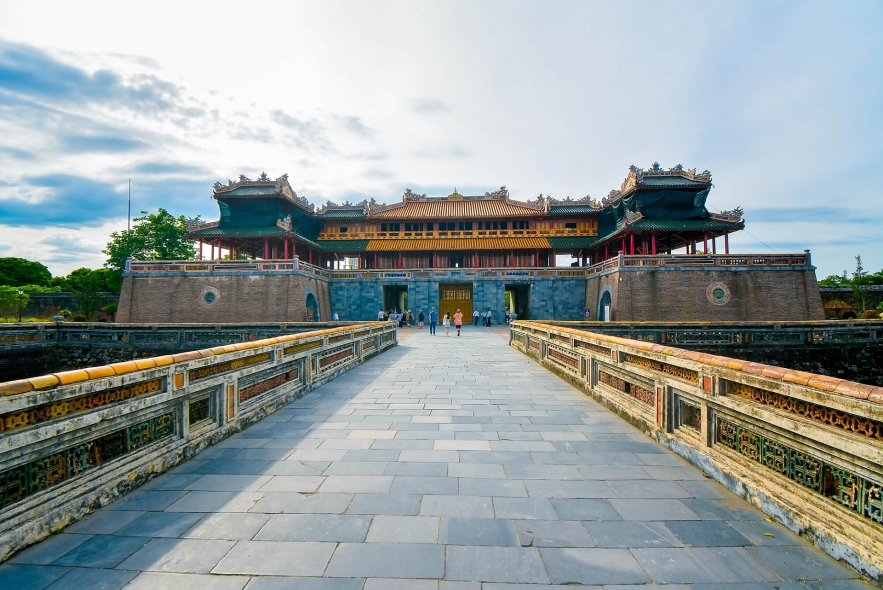 |
| Thai Hoa Palace |
The very first stop is the exterior circle – the Kinh Thanh Hue (Hue Capital Citadel). Square shaped with almost 10km in circumference, it is 6m high with 24 bastions established on the walls for defensive purpose. Connecting with Tran Binh Bastion, the Citadel has an ancillary gate called the Tran Binh Mon (means Peaceful Protector Gate).
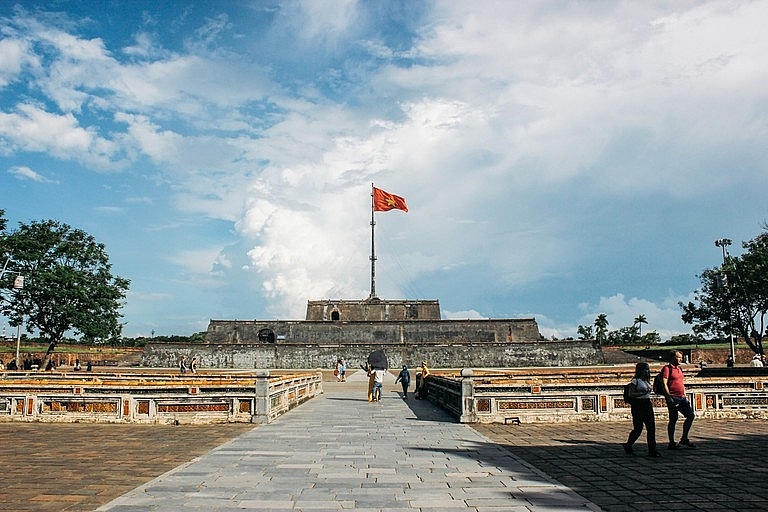 |
| Big square infront of main gate |
The second circle is the Hoang Thanh (means Royal Citadel), which is the most important part of the Citadel. The Citadel is more than 600m long for each side, built with 4m-high and 1m-thick bricks. Royal Citadel consists of more than 100 fascinating architectural works divided into 4 sections: Section of Ngo Mon Gate and Thai Hoa Palace (used for various grand ceremonies); Section for placing shrines of Nguyen Dynasty’s Kings; Section of internal affairs office; and Section of Kham Van Palace and Co Hai Garden (where the princes studied or relaxed).
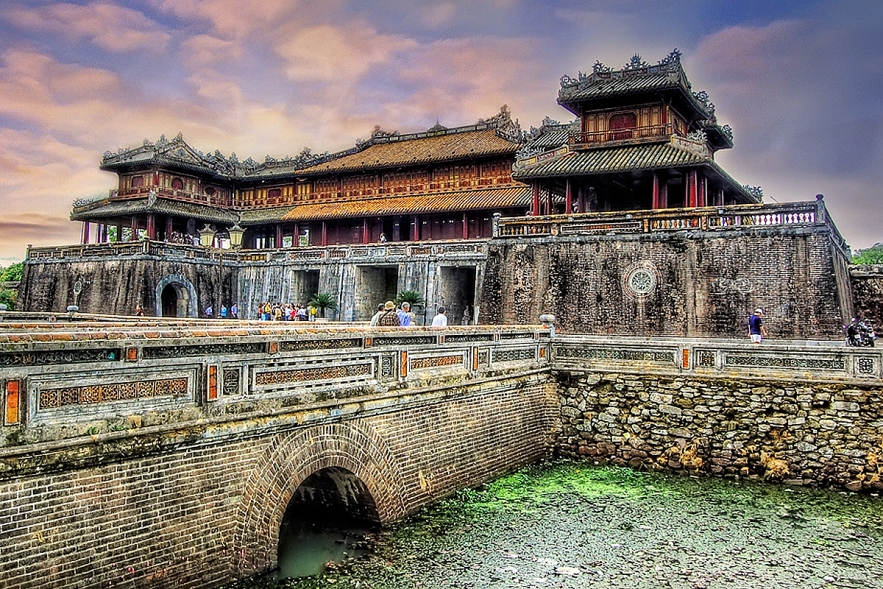 |
| The Hoang Thanh is the most important part of the Imperial City |
The sprawling complex in Hue was where the Emperors and his relatives lived and conducted all their business. A part of the Citadel is known as “The Purple Forbidden City”. Most of the Purple Forbidden City, where the emperor lived, was destroyed, and you can still see many bullet holes in walls. The original structures were modeled off the Chinese Forbidden City in Beijing. The Forbidden City was situated behind the Throne Palace and consisted of 50 architectural constructions of different sizes and 7 gates. Although it is slow and has not done much, restoration progress turned some spots to look exactly like the original ones. Wandering around, travelers can still see some of the imposing city gates, walls, beautifully restored halls, or the ancient moat that is fed by the Perfume River. The feudal architecture of Dai Cung Mon (the Grate Palace), Can Chanh Palace (Emperor’s daily working place), Can Thanh (Emperor’s private palace), Khon Thai Residence (Queen’s private apartment), Duỵet Thi Duong house (Royal theater), Thuong Thien (Royal kitchen for the Emperor), Thai Binh Lau (Emperor’s reading room), … are something special that has been luring countless visitors.
The Mausoleums
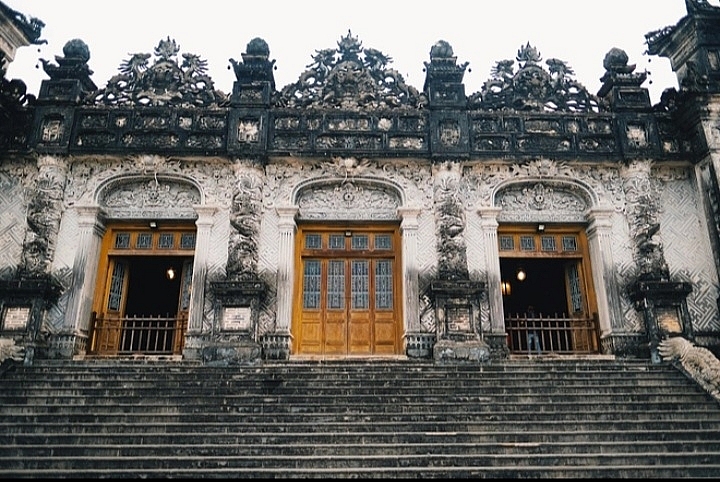 |
| Tomb of King Khai Dinh |
Thanks to serving many former dynasties, the Citadel has many beautiful tombs, which the Kings of Nguyen Dynasty elaborated dedicating to themselves. therefore, a system of royal tombs in Hue is quite diverse, which are situated along Huong River (Perfume River)
The three most popular tombs are Tu Duc, Khai Dinh and Minh Mang, which are ones having the more outstanding architecture than the others. Tu Duc Tomb was built during a period from 1864 to 1867 when the King Tu Duc was still alive. Situated around a beautiful lake, Tu Duc Tomb is considered as one of the most beautiful royal tombs of Nguyen Dynasty. The architecture of this tomb is pretty harmonious with nature.
The Surrounding Scenery
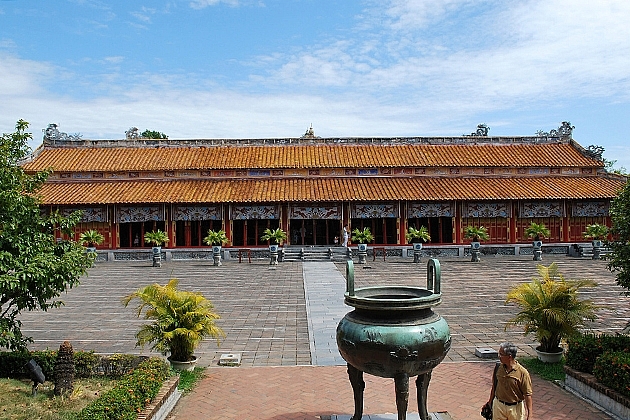 |
| The To Mieu Temple complex |
The To Mieu Temple complex (Thế Tổ Miếu) was ordered to be built by the emperor Minh Mạng in 1823 to worship the previous nine rulers of his dynastic line, which is why there are nine tripod cauldrons around the courtyard in front of the temple. The temple itself is modeled off the Imperial Ancestral Temple, or Taimiao, in Beijing.
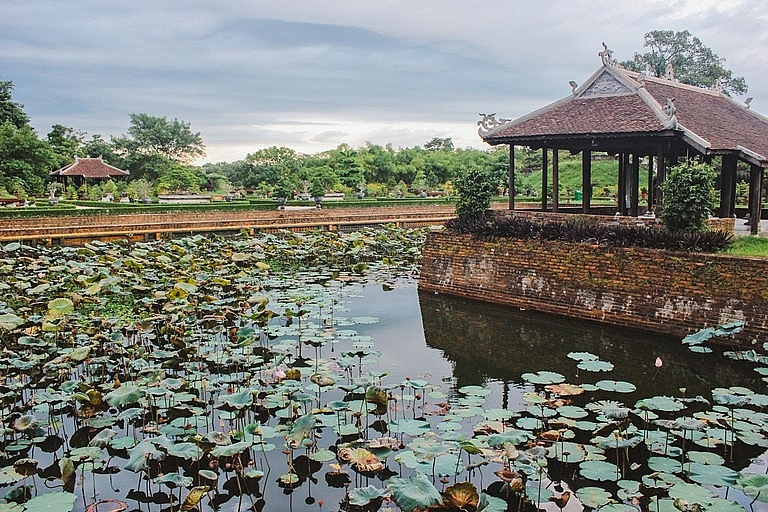 |
| Co Ha Gardens |
Co Ha Gardens, located at in the northeast corner of the Imperial City, were built by the first four emperors of the Nguyen dynasty. For many years, they fell into disrepair, but a restoration project has brought this opulent area back to their former glory.
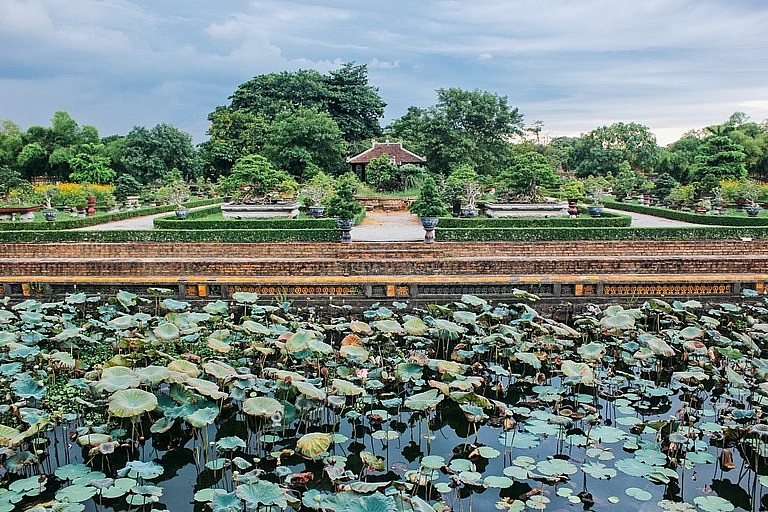 |
| Co Ha Gardens |
Finally, Thien Mu Pagoda is a scared pagoda in Hue. The name of the pagoda comes from a legend: a long ago, an old woman appeared on the hill where the pagoda stands today. She told local people that a Lord would come and build a Buddhist pagoda for the country's prosperity. Lord Nguyen Hoang, on hearing that, ordered the construction of the pagoda of the "Heavenly Lady".
The pagoda is situated on Ha Khe hill, on the left bank of the Perfume River, in Huong Long village, 5km from Hue city. It was built in 1601, and then Lord Nguyen Phuc Tan had it renovated in 1665. In 1710, Lord Nguyen Phuc Chu had a great bell cast (2.5m high, 3.285kg) and in 1715, he had a stele (2.58 m high) erected on the back of a marble tortoise.
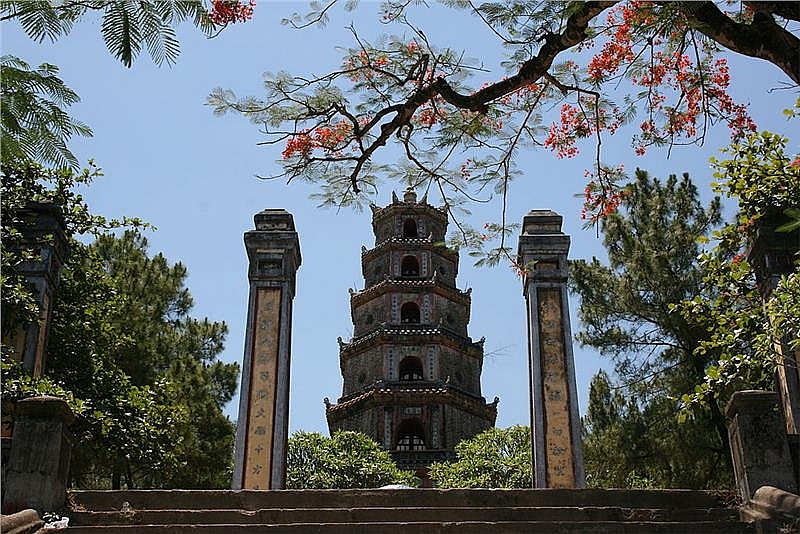 |
| Thien Mu Pagoda |
Several kings of the Nguyen Dynasty such as Gia Long, Minh Mang, Thieu Tri and Thanh Thai, all had the pagoda restored. Phuoc Duyen tower (at first called Tu Nhan tower) was erected in 1884 by King Thieu Tri. This octagonal tower has seven storeys (2m high). Dai Hung shrine, the main-hall, presents a magnificent architecture. As well as bronze cast statues, it shelters some precious antiques: the bronze gong cast in 1677, the wooden gilded board with Lord Nguyen Phuc Chu's inscriptions (1714). On both sides of the pagoda are a room for the bonzes and a guest-room for visitors.
The pagoda is surrounded by flowers and ornamental plants. At the far end of the garden stretches a calm and romantic pine-tree forest, according to Vietnamtravel.
The pagoda was heavily damaged in 1943. Bonze Thich Don Hau hence organised a great renovation of the pagoda, that lasted for more than 30 years.
Talking about Central Vietnam, people frequently focus on the sun, the wind as well as the dry and harsh nature. But this lost imperial city is still romantic in the depression. Hue Citadel looks like a bridge between the ancient and the modern.
| Vietnam’s capital city boasts a resplendent beauty at night |
| Ha Giang, colorful beauty of nature and people |
| City in the clouds: epic photos of Dalat's misty season |
Recommended
 Travel
Travel
Strategies for Sustainable Growth of Vietnam’s Tourism from International Markets
 Travel
Travel
Vietnam Strengthens Its Presence On The Global Tourism Map
 Multimedia
Multimedia
Phong Nha-Ke Bang National Park Named Top Adventure Travel Site
 Travel
Travel
Phong Nha Named Top Budget-Friendly Travel Destination for Spring 2025: Agoda
Popular article
 Travel
Travel
Four Indian Films Introduced to Lao Cai Audience
 Travel
Travel
Vietnam to Waive Visas for Citizens from 12 Countries until 2028
 Travel
Travel
Ninh Binh Full-day Tour among World’s Top Experiences: TripAdvisor
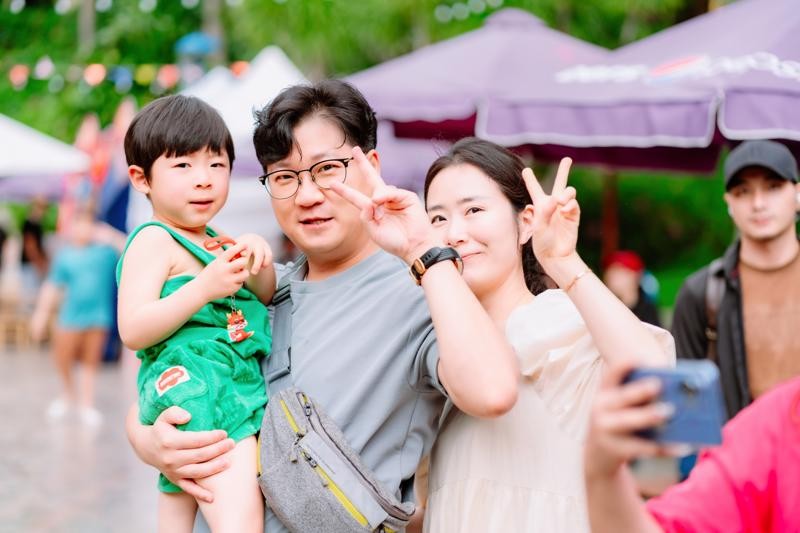 Travel
Travel

